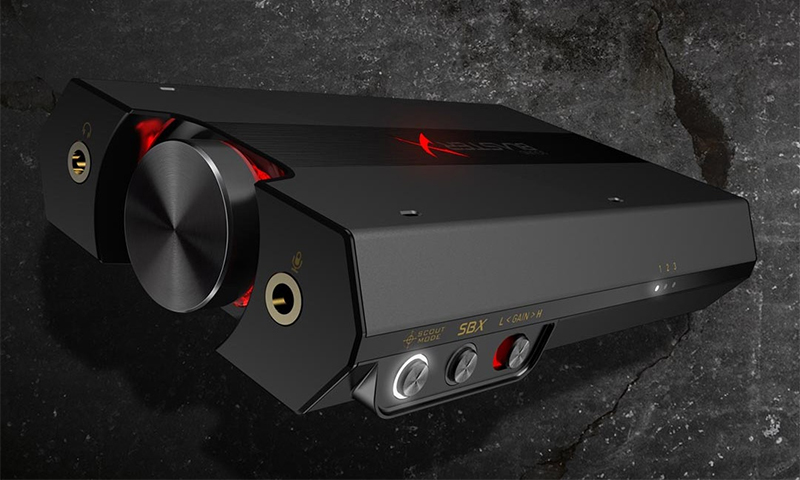Many adolescents often in childhood were fond of playing an old acoustic guitar and envied those instruments that they saw in the hands of professional performers on television. Now electric guitars of different classes have become much more affordable and they are bought for children, for an adult hobby or to play in a team.
When choosing, you should not focus only on price, but it is necessary to delve into the characteristics, because the genre of mastered music, the need for a certain removal of sound waves with equipment and the physical parameters of the instrument are of great importance. To understand all this and make the right choice of electric guitar will help this article.

Content:
The best manufacturers of electric guitars - which company to choose
For the most busy beginners, who have no time to understand the parameters, but really want to learn this musical instrument, we offer a list of the best companies for the production of electric guitars.
You can safely buy any of the following brands:
- Cort;
- Gibson;
- Yamaha;
- Ibanez;
- Fender
But the price run may be quite large, so you should read the next review with a description. top electric guitars. Independent selection of a tool by parameters requires knowledge of their range and influence on the game. We will teach you this.
The principle of operation and the device electric guitar
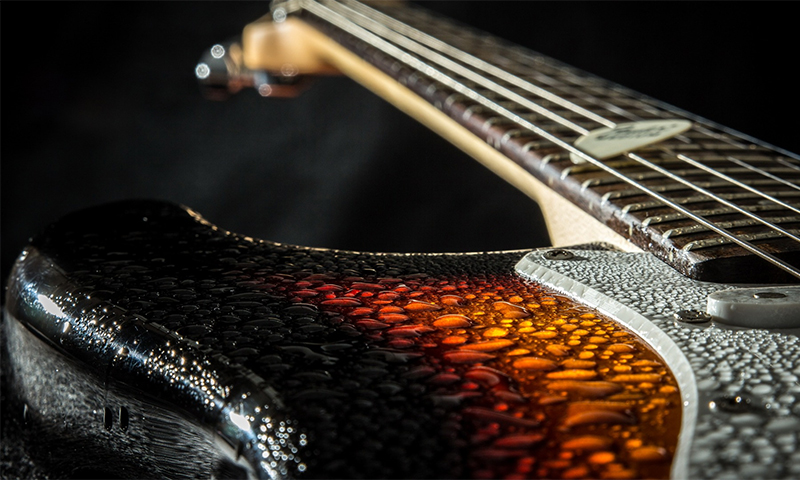
This instrument, although similar to ordinary guitars, is radically different in the way the sound is propagated.
In acoustic models, vibrations from the strings fall into a three-dimensional case, which acts as a resonator. For this, there is a socket under the strings - a hole for transmitting sound. In electric guitars, the body is several times smaller, and the socket is completely absent in most models.
If you just play without connection on it, then you can no longer hear such music in 30-50 meters. But thanks to the pickup and additional equipment, the sound from the electric guitar can be heard to everyone in the stadium.
The following parts are included in the package of the standard electric tool:
1. Pegs for stretch;
2. Strings;
3. Grif;
4. Body (empty or half empty);
5. Frets with metal sills;
6. Magnetic coils;
7. Regulator;
8. Bore adjustment unit;
9. Switch.
The principle of the electric guitar is a double action. The strings stretched between two thresholds produce a certain sound. They are tuned to the notes to distribute the Actaves on the neck. The strings below make a higher sound, and those above are low. Thanks to this instrument you can play both classic and rock games.
The second side of the guitar provides the pickup. It consists of several magnets with wound coils. When this block is turned on, the string is in the field of action of the magnetic field. Now each of its vibrations is converted into an electrical signal.
The latter is fed to the amplifier and acoustic equipment. This allows you to distribute sound over a long distance. On the side of the instrument case there is a regulator that modifies the length of the note and its length, which makes it a real miracle. Some virtuosos master the electric guitar so skillfully that it seems that they can make out the words of the instrument spoken by the instrument in their playing.
Electric guitars are used in different ways: they are bought to teach children music, adults learn this instrument as a hobby to get distracted after work, musicians play them in amateur groups on corporate parties or in restaurants.Professionals can act to accompany the artist or as a solo concert.
Types of electric guitars
Standard

This is a classic in terms of electric musical instrument. There are a variety of body shape, but they are all united by the absence of an outlet. Their game without connection is almost not audible at a distance.
Such electric guitars are used only in combination with amplifiers and speakers. At home they are rarely played, and the main areas of application are playing in amateur groups, performances in restaurants and at events and concerts.
On it, you can play any genre from the stage to the outright hard.
Advantages:
- a huge selection of body shape;
- stylish design;
- various pickup options;
- adjustable lower threshold;
- there are models with cases;
- glass effect;
- a light weight;
- ergonomic.
Disadvantages:
- are very expensive;
- the regulator may be close to the strings and touch with your fingers when playing;
- without an amplifier almost inaudible.
Acoustic Electric Guitars

This is a mixture of an ordinary guitar and its electronic prototype. It comes with compact cases, similar to the more advanced versions of electric guitars and built-in electromagnetic coils.
Its main difference is the use of a hollow body, where the sound from the strings enters through the holes in the f shape at the top and bottom of the deck.
Thanks to this, the instrument can be used both at home, for practicing a child or an adult (which does not interfere with neighbors), and at performances where an amplifier is connected. Such guitars are more suitable for blues, jazz or rock and roll.
Advantages:
- wide range of timbres;
- has a balanced sound with sufficient voicing and softness;
- can be used without switching on the amplifier;
- attractive appearance;
- small weight;
- affordable price;
- slim body is convenient for children.
Disadvantages:
- weak resonance;
- not all are suitable for use at concerts (depending on the capabilities of the pickup).
Electric Guitar Selection Parameters
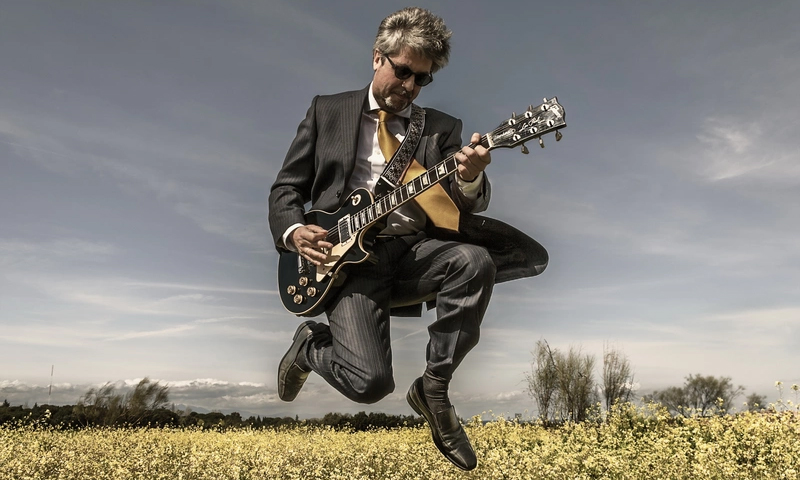
Number of frets
On the fretboard there are metal inserts-plates, which are cut into the tree at an equal distance and cover it from the upper nut to the deck. They range from 18 to 24. On top of these elements are strings stretched with a certain sound.
To change the note, the musician presses the string with his finger to the fret, and thereby shortens its size. It helps to enhance the sound. The closer to the deck clamped metal string, the higher the note.
To play a brute force, it is enough to clamp the strings alternately, and for the fight it is necessary to set the chords, where 3-6 pieces are pressed immediately. The greater the number of frets, the wider the range of the instrument.
The shortest frets allow you to play only high notes, which is not necessary for every musical composition.
1. In view of this, 18 frets are enough for a child to learn to play the guitar.
2. Using the tool as a hobby, when mastering the genres of pop, blues or rock, will require 21-22 frets.
3. For virtuoso performances from hardcore to Flight of the Bumblebee, you need a guitar for 24 frets.
Body material
Manufacturers always indicate from which tree the body is made. Wood (its density and weight) affects the sound.
Depends on this and the cost of the finished product:
1. Ash, linden, spruce and poplar are light breeds where the price of a guitar is quite affordable. Due to the less dense structure of the fibers in such instruments, the sound in the upper frequencies is more pronounced, which is suitable for solo guitarists.
2. Rosewood, koa, alder - belong to the middle breeds, which allocate equally all the frequencies, which is suitable for both hobbies and rhythm guitars in a team. Solo sounds good to them too.
3. Walnut, wenge, padouk, and red breeds are well established in powerful batches. They clearly beat off the rhythm and confidently hold the broach on the notes.
Body shape
Among the electric guitars there is a variety in the form of the deck.This is not intended for the sake of stylish design, but has a direct impact on the reproduced sound.
Here are the most common types of form:
1. Stratocaster - different roundish features and two horns. This is a universal guitar, suitable for both jazz and rock. A great option for a beginner or amateur.
2. Les Paul - has a wider neck, a round case and a cutout at the bottom for easy reaching of high frets. Such models are suitable for a measured game with a slow search of notes. The sound is very soft with a volumetric tone.
3. Flying V - looks like a sharp arrow with two far-off horns. They are the same size or with an elongated bottom. Futuristic design is more suitable for concert performances to create the effect of an unusual "space" tool. Used for shows and has no distinct advantages over other forms.
4. Beast is a beautiful deck with very sharp corners. Such Gothic models are well established in the styles of hard rock and metal. They have a piercing cold sound and a large range of adjustment.
5. Warbeast - similar to the previous one, but the upper and lower horn is modified. It is applied at concerts of rock groups and an amateur game in this genre.
Neck mount
Two important parts of an electric guitar (body and neck) can be connected in different ways:
1. Bolting - significantly reduces the cost of construction and makes it easier to repair or replace in case of damage. But due to the lack of tight contact between the fingerboard and the deck (there are micro slits under the heel), the sound may be sharper, which is more suitable for rock, although such models are considered universal.
2. Glued - takes more time to make, so these guitars are more expensive. They are more difficult to repair, but thanks to the tight fit of the parts, the sound is softer and smoother, which is suitable for jazz music.
3. Through - here the length of the neck occupies the entire guitar, and the deck is only attached at the top and bottom. This is the most expensive design, which gives the most natural sound. The pronounced sound of such an instrument is great for individual solos.
Right or left
The guitar is played with two hands, where the left one clamps the chords and the right one is doing a brute force or a fight. This configuration is called right-sided. But given that 7% of the population of the planet is left-handed, the developers produce some of these products with an inverted arrangement of elements.
If it is more convenient for a person to touch the strings with his left hand, then there is no need to disassemble all parts of the electric guitar and rearrange in the reverse order. You can immediately call the seller left-hand model.
String number
On the electric guitar can be from 6 to 8 strings. The more of them, the more varied can be the melody. But this is only true when playing brute force, with 7 and 8 strings being bass, so they will only have an impact on such works or passages. If the group has a separate bass guitar, then it will easily replace such sounds.
1. For a child or an adult model suitable for 6 strings.
2. For a frank bass player and self-lover, you need an 8-string guitar.
3. The musical group will need a 6-7 string instrument.
Pickup
Studying the characteristics of an electric guitar, one can notice the presence of the designation “N / N” or “S / S / S” and combinations of these letters.
These are the performance of the pickup, or rather its physical structure and the number of these elements on the instrument. On this depends the power and clarity of the signals that will be fed to the amplifier.
1. H - designate humbucker, consisting of two coils lined up on the same magnetic core. Includes such a scheme as antiphase. This gives high protection against interference and allows you to give a powerful signal.
2. S - denote a single, another kind of pickup, consisting of one coil. It has a high clarity of sound, but is subject to interference and has a weak signal.
On one electric guitar there can be several types and pieces of each pickup, which gives combinations for their use.
1. For hobbies fit model S or S-H.
2. Performance in a cafe or restaurant with a small audience is carried out on the equipment S-S-S or S-S-H.
3. Large scale concerts need H-H or H-S-H.
Bridge and menzura
Every guitar needs tuning. The strings themselves are regulated on the head with tensioners. But it is important not only sound, but also the correct system. If the instrument “does not build,” that is, does not give an exact note, then adjustment is necessary.
For this, some models have two elements:
1. The bridge (lower threshold) can be not rigid, but mobile. With it, lower or raise the string above the fingerboard. This allows you to set the optimal position and protect against overtones. Such models are needed by professionals and playing in groups. If the bridge is hard, then the height of the strings is set simultaneously on all by tightening the bolts. It is suitable for lovers and children.
2. Mensura is the distance between two thresholds. It can be permanent or adjustable. If the note sounds wrong, the length of the string changes with a screwdriver. This is a very time-consuming process, requiring a tuner and a good ear for music. Beginners better not to change the length of the strings and use only the head for tuning.
Hollow body
Electric guitars may have a body filled with wood with voids or hollow particles. The smaller the internal space in the body, the quieter the instrument sounds without connecting an amplifier.
1. Half-empty models, without coils included (for example, when using at home), allow you to rehearse only the chords of a new song, without learning the length of their hold. Such tools must be used at rehearsals in the garage or club to always connect the amplifier.
2. Hollow bodies also sound good as an acoustic version, which is applicable to friendly parties or a single player at home. It is suitable for a hobby or amateur group to create two versions of a song: electronic arranged and acoustics.
Case
Some models are sold in cardboard packaging, while others have a hard case. This will be practical if you frequently change the place of the game: home, club, cafe and rehearsal place.
If classes occur in a permanent room (at home or in the garage) and the transfer of tools is not required, then you can buy a model without a case.
Colour
Electric guitars are available in various colors. Although the color is chosen to taste, it is worth noting that the body of the guitar is always in the hands, and this leads to the smudging of the subject. Thanks to the paintwork, such traces are easily washed away, but if the musician is torn between rehearsals and performances, then there may be no time left.
1. Therefore, for home use, where there is time to take care of the instrument in terms of hygiene, white and yellow guitars are suitable.
2. Professional performers with a busy schedule is practical to take red or black models.
What kind of electric guitar to choose
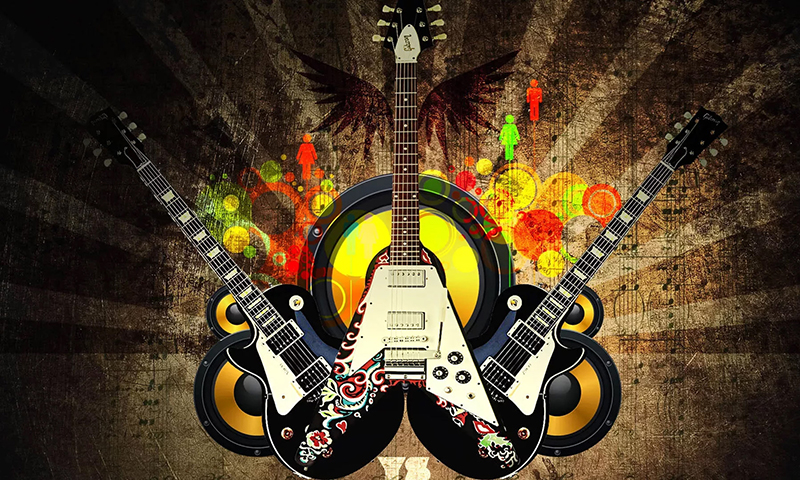
1. A model for 20-21 frets, made of lime, with the shape of the body Stratocaster, bolt-on neck, S-S pickup, unregulated bridge, with 6 strings, hollow body, white, will suit the child. It may be worthwhile to consider semi-acoustic versions.
2. An adult for a hobby will need an electric guitar with a more stable soft sound, which is provided by Les Paul cases, made of alder and rosewood, with glued neck fastening, 6-7 strings, HHS pickup, adjustable menzuri and bridge, red, with a hollow body, for 22 frets .
3. To play in a group, you need a tool like Beast, with a screw fastening to the body, a fretboard for 24 frets, a walnut or mahogany material, 6 strings, an H-H pickup, a black lacquer travel case with adjustable bridge, and a maple fingerboard.
How much is an electric guitar
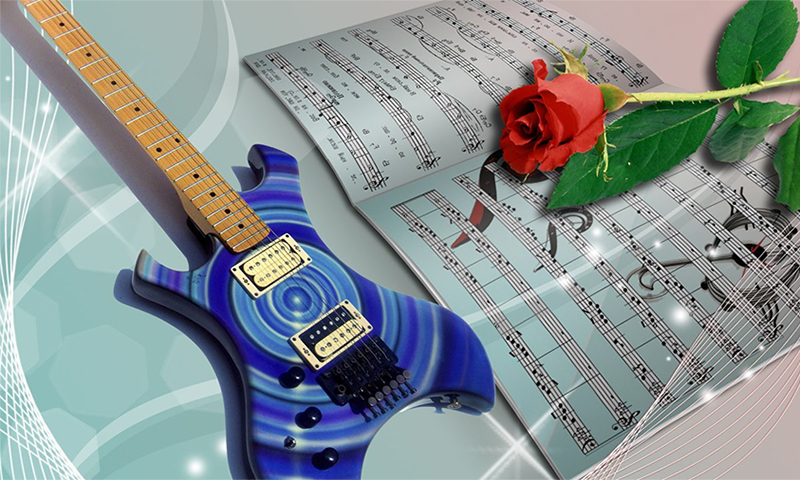
After studying all the various parameters, you can navigate the cost of a future purchase. For example, for the above needs, the rates will be as follows:
1. A tool for practicing a child can be bought for 6000-7000 rubles.
2. An electric guitar for a hobby for an adult costs 9000-12000 rubles.
3. Beautiful gothic guitar is sold from 15,000 to 20,000 rubles.
It will be interesting to friends too

